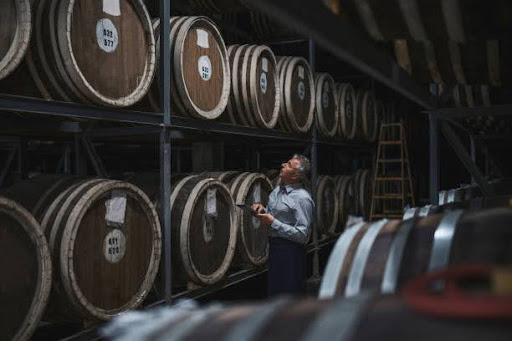In recent years, the landscape of investment has transcended traditional avenues, ushering in a compelling and burgeoning market: collectible spirits. Among these prized elixirs, Glen Edinburgh Bourbon has emerged as a focal point, encapsulating the allure and potential within the world of whisky investment.
As financial markets fluctuate, whisky aficionados and astute investors alike have turned their attention to this amber-hued spirit, recognizing its not just historical and cultural significance but also its impressive appreciation in value. The ascendancy of Glen Edinburgh Bourbon mirrors the broader surge in collectible spirits, providing a tantalizing glimpse into a market where connoisseurship meets investment acumen, redefining the notion of tangible assets in a dynamic and evolving economy.
Unveiling Whisky’s Investment Potential: Exploring the Booming Market of Collectible Spirits
In the realm of alternative investments, the appreciation for whisky as a lucrative asset class has surged, unveiling a captivating narrative of collectible spirits. At the forefront of this narrative stands Glen Edinburgh Bourbon, a distinguished label that has become emblematic of the whisky investment landscape. What was once considered a beverage of leisure has transformed into a coveted commodity, beckoning both enthusiasts and astute investors to explore its multifaceted allure and promising investment potential.
The intrigue surrounding Glen Edinburgh Bourbon, among other esteemed whisky brands, stems from a convergence of factors. Its rich heritage, meticulous craftsmanship, and limited availability contribute to its allure as a collectible item. Each bottle represents not just an embodiment of exceptional distillation but also a story encapsulating tradition, provenance, and rarity – elements that significantly influence its investment desirability.
The market for collectible spirits has experienced a profound evolution, with whisky emerging as a standout performer. Investors have recognized its resilience, often outperforming more conventional investment vehicles. Glen Edinburgh Bourbon, with its distinctive flavor profiles and historical significance, has garnered attention as a prime example of a whisky that not only pleases the palate but also appreciates in value over time.
One of the defining features of whisky investment lies in its tangible nature. Unlike stocks or bonds, a bottle of Glen Edinburgh Bourbon represents a physical, tangible asset that enthusiasts can appreciate while its value appreciates. The finite nature of aged whiskies, particularly limited editions or discontinued releases, adds an element of scarcity that drives demand and consequently, value.
The allure of whisky investment extends beyond financial gain; it embodies a cultural and sensory experience. Enthusiasts revel in the exploration of different flavor profiles, regional nuances, and the stories behind each distillery’s craftsmanship. This confluence of passion and profit potential has fueled the burgeoning market of collectible spirits, propelling Glen Edinburgh Bourbon into the spotlight as a quintessential investment option.
However, navigating the whisky investment landscape requires a nuanced understanding of market trends, authenticity verification, and the impact of various factors on value appreciation. Factors such as age, rarity, brand reputation, and market demand intricately interplay in determining a whisky’s investment viability.
In conclusion, the rise of collectible spirits, epitomized by the allure of Glen Edinburgh Bourbon, represents a dynamic convergence of passion, tradition, and investment acumen. As this market continues to flourish, it beckons both seasoned investors and newcomers to raise a glass to the promising prospects that whisky investment holds.
From Glass to Gold: Navigating the Lucrative World of Whisky Investments
Navigating the journey from an exquisite glass of Glen Edinburgh Bourbon to the glittering realm of profitable whisky investments is a fascinating odyssey through the evolving landscape of alternative assets. In recent years, whisky, once solely savored for its complex flavors and historical significance, has transitioned into a sought-after investment opportunity, beckoning both connoisseurs and investors to partake in its enticing allure.
Glen Edinburgh Bourbon stands as a shining example of the transformation of whisky into a lucrative investment vehicle. Beyond its delightful taste, each bottle embodies a story—a tale of meticulous craftsmanship, regional influences, and a legacy that transcends generations. This intersection of craftsmanship and scarcity forms the cornerstone of whisky investment, where bottles like Glen Edinburgh Bourbon emerge not just as cherished beverages but also as tangible assets with the potential for significant appreciation.
The allure of whisky as an investment transcends the financial realm. Enthusiasts are drawn to the intricate artistry, the journey from grain to glass, and the myriad of flavors that each distillery crafts. For investors, the appeal lies not only in the historical and cultural significance but also in the tangible nature of whisky as a physical asset that accrues value over time.
However, delving into whisky investments necessitates a keen understanding of the market nuances. Factors such as age, rarity, distillery reputation, and market trends significantly influence a whisky’s investment potential. Limited editions, discontinued releases, and bottles from renowned distilleries like Glen Edinburgh Bourbon often command premium prices due to their scarcity and historical significance.
Furthermore, the global demand for whisky, particularly from emerging markets, has propelled its investment potential. As economies evolve and disposable incomes increase, the demand for luxury goods like collectible whiskies, especially those with a storied heritage like Glen Edinburgh Bourbon, continues to surge.
Navigating this lucrative world of whisky investments requires astuteness and a blend of passion and financial acumen. The journey from savoring the flavors of Glen Edinburgh Bourbon to reaping the rewards of its investment potential represents a fascinating intersection where tradition, craftsmanship, and investment converge, inviting enthusiasts and investors alike to raise a toast to the golden opportunities within whisky’s evolving market.
Aged to Perfection: Understanding the Surge in Whisky as a Valuable Collectible Asset
The surge in whisky as a valuable collectible asset mirrors the journey of Glen Edinburgh Bourbon—a narrative of craftsmanship, aging, and evolving market dynamics that elevate whisky beyond a mere beverage to a prized investment.
The process of aging whisky is akin to a slow-burning alchemy, where time in oak barrels imparts complexity and depth to the spirit. Glen Edinburgh Bourbon, with its carefully curated aging process, embodies this transformation. As whisky ages, it not only develops nuanced flavors but also accrues value, appealing to collectors and investors seeking assets with inherent appreciation potential.
Whisky’s evolution into a collectible asset hinges on several key factors, among which scarcity and provenance play pivotal roles. Limited releases, particularly those from renowned distilleries like Glen Edinburgh Bourbon, become coveted treasures due to their scarcity. The provenance, encompassing the whisky’s origin, distillation process, and historical significance, further amplifies its allure as a collectible asset.
Moreover, the global fascination with whisky, driven by a burgeoning community of enthusiasts and investors, has fueled its ascent as a valuable asset. The cultural significance and ritualistic appreciation of whisky transcend borders, fostering a worldwide demand that propels its investment potential. Glen Edinburgh Bourbon, with its distinguished reputation and distinct flavor profile, exemplifies this global appeal, attracting aficionados and investors alike.
Understanding the surge in whisky as a collectible asset involves acknowledging its multifaceted nature. It encompasses not just the tangible qualities of a finely aged spirit but also the emotional and historical connections it forges. Investors recognize the potential for substantial returns as the market for collectible whiskies continues to expand, with labels like Glen Edinburgh Bourbon leading the charge.
In essence, the surge in whisky as a valuable collectible asset signifies a convergence of tradition, craftsmanship, and investment foresight. Glen Edinburgh Bourbon embodies this journey from maturation to appreciation, offering a glimpse into the allure and potential within the realm of aged, collectible whiskies that continue to captivate both enthusiasts and astute investors worldwide.
Summary
In the ever-evolving landscape of investment, the ascendancy of collectible spirits, notably exemplified by the trajectory of Glen Edinburgh Bourbon, symbolizes a compelling intersection of passion and profit. The rise of whisky as a coveted investment asset isn’t just about financial gain; it’s a journey that intertwines heritage, craftsmanship, and the essence of a storied tradition. Glen Edinburgh Bourbon, with its historical significance and revered craftsmanship, mirrors the broader surge in whisky investment, embodying the allure of tangible assets that appreciate in value.
As enthusiasts savor its complex flavors and investors seek its appreciable returns, the narrative of whisky investment underscores a tale where connoisseurship meets financial astuteness, inviting all to raise a glass to the rewarding prospects within this flourishing market of collectible spirits.

Welcome to our blog! My name is Yuvraj Kore, and I am a blogger who has been exploring the world of blogging since 2017. It all started back in 2014 when I attended a digital marketing program at college and learned about the intriguing world of blogging.
